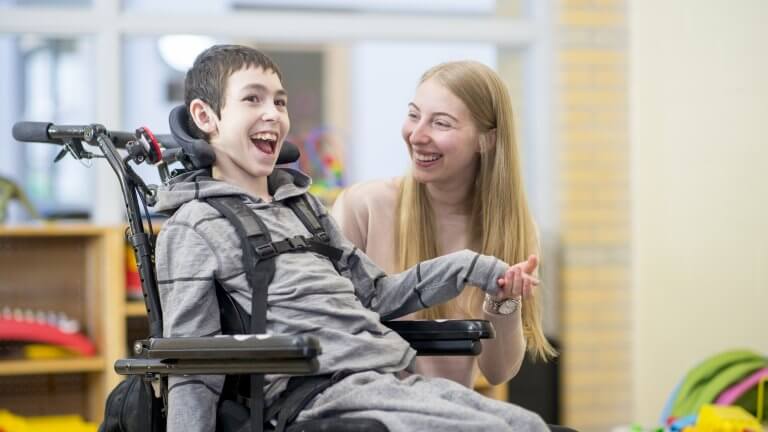Special Education Teachers work with students with a wide range of abilities. Sometimes teachers get a new student with multiple and complex disabilities. Often, that teacher doesn’t have any previous experience working with that student’s particular needs.
These students might be so unique that even if you’ve worked with a similar student, it can feel entirely different. I’ve talked to countless teachers who feel overwhelmed by feelings of not knowing where to start. I tell them all something super simple: you have everything you need to help them, right now.
Here are three things you can do immediately that have a huge impact later on down the line.
- Establish your classroom as a safe, comfortable space
- Understand your student’s particular needs
- Develop good communication with all relevant stakeholders
Establish your classroom as a safe, comfortable space
Students with multiple needs sometimes have high levels of anxiety. Often their lives are spent moving from one location to another, with different stimuli and no sense of what’s coming next.
As soon as you can, establish a routine schedule that is followed every day. Include ways to signal to the student that a change is coming. Perhaps a short song or a gentle instrument can be played in the minutes leading up to a transition. Some changes might seem small to us, but are significant to our learners. Turning on the lights in a room could take minutes for a student to adjust to if taken by surprise. Counting down 3-2-1 before turning on the lights helps create an expectation that can help the student adjust to the change in stimuli. Continue to explore ways you can cultivate a safe nurturing environment.
Understand your student’s particular needs
No two learners are alike. Taking the time to understand your student’s unique strengths and needs will make a big difference as you begin to develop instructional materials for them. Look beyond their diagnostic label and get to know the student as a child, who has strengths, a personality, likes and dislikes. Start to build a strong relationship that will be the foundation of future learning.
Also, talking to related service providers, like Speech-Language Pathologists, Occupational Therapist, or Visual Impairment Teachers, can help get a grasp of what specifically your student needs to access their world.
For example, if a student has a cortical visual impairment, understanding what that means for this student can be important. Can they only see you when standing on the left side? Do they need a black background to perceive images? Knowing these now will help you set up the classroom for maximal benefit for your student.
Develop good communication with all relevant stakeholders
Finally, establish good communication with parents, guardians, nurses, doctors, and whoever else is an important person in the student’s life. Sometimes decisions will be made outside the classroom that will greatly impact life inside the classroom. Changes in medicine, plans of care, surgeries and more will be major factors. Having knowledge about it, or even being part of the team that helps guide these decisions goes a long way in developing your place as a crucial element in your student’s life.
We have the opportunity to change a life for the better fundamentally when asked to teach a student with multiple and complex disabilities. With the right mindset and some early investment of time, you can establish yourself as a key participant in their journey towards a brighter future.





Add comment